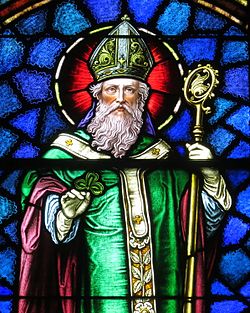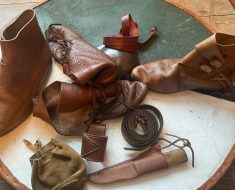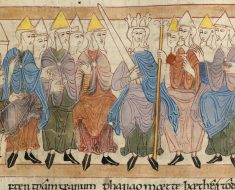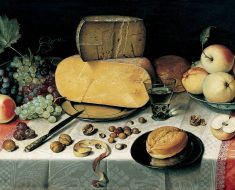Who remembers spending hours as a child walking the woods with…a stick!
Perhaps it was just me then?

n medieval times, wooden staves were far more than just a simple walking stick…they were essential tools, companions, and symbols of strength and purpose.
Whether used for travel, defence, or work, the staff was a versatile and widely used object in everyday life, and its significance extended far beyond practicality. For many people, the staff was a symbol of status and authority.
Saints in medieval Christian tradition often carried staves, which became symbolic of their holy authority. For example, Saint Peter, the first Pope, is often depicted with a staff, representing his role as a spiritual leader and guide.
Saint Patrick, the patron saint of Ireland, is likewise shown with a staff, and famously said to have used it to drive snakes out of Ireland….why I don’t know?
It was imbued with symbolic power as a means of guidance, protection, and leadership. Monks and bishops also carried staves, known as croziers, which were ceremonial staffs that denoted their ecclesiastical authority.

These staves were highly decorated, often topped with intricate carvings or symbolic figures, adding to their sacred significance.
The staff was not just a physical tool either. For common folk, the staff was an everyday object, especially for those who traveled long distances. Pilgrims journeying to holy sites across Europe, such as those heading to Santiago de Compostela in Spain, carried staves as both a support and a symbol of their pilgrimage.
The staff provided much-needed stability on rough roads and was often seen as a practical item during long, tiring walks across rough landscapes. It also acted as a deterrent from would be robbers!
The self-defense aspect of the staff cannot be overlooked, especially in medieval society where personal safety was always a concern. For many peasants or travelers without access to proper weapons, the staff served as an effective means of defence.
It was easy to carry, and its length made it ideal for both striking and blocking in close combat.
The famous characters of medieval literature often wielded staves as part of their image too! Perhaps the most legendary is Little John (he of Robin Hood the famous outlaw from Sherwood Forest fame) Little John… who was actually big…was often depicted with a large wooden staff, which he used not only for walking but also as a weapon during the famous fight with Robin Hood across a river.
This fight, which became a hallmark of Robin Hood stories, shows how a simple wooden staff could be used as a formidable …and cheap…weapon!

The medieval knightly class also sometimes used a staff. While knights were primarily known for their swords and axes they too would occasionally carry a staff, especially on ceremonial occasions or, again, during long journeys where it could serve both as a walking aid and a symbol of their rank.
Beyond these symbolic and practical uses, the work staff was indispensable in the medieval world, particularly in rural areas.
On farms, staves were used to herd animals, often with great force when needed!
In all, wooden staves in medieval times were more than just tools, they were extensions of the person carrying them. Whether they were pilgrims with staves marking their spiritual journey, saints with ceremonial staffs symbolizing their divine authority, or outlaws like Little John in the Robin Hood tales, staves played an essential role in both the practical and symbolic aspects of medieval life.
Now I’m off to find myself a good stick!





